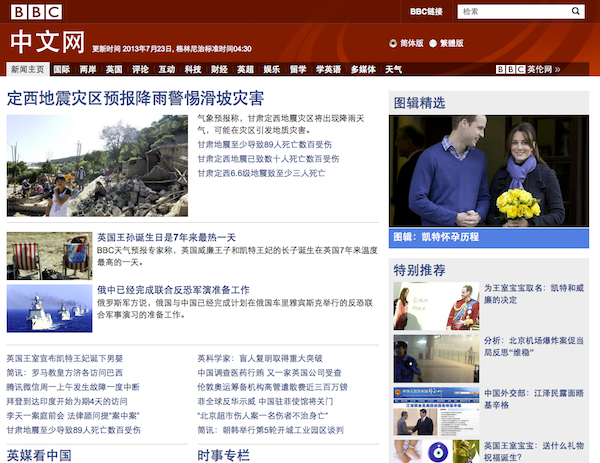 Translation can be dangerous. When it comes to keyword research, terms that are searched on the Internet simply can’t be translated because people in different countries often use different words or ways to describe things.
Translation can be dangerous. When it comes to keyword research, terms that are searched on the Internet simply can’t be translated because people in different countries often use different words or ways to describe things.
Regardless of keyword research, international digital marketing continues to explode and with that, the question becomes more around what to do with translating all of the enormous content and media assets that websites already have in their home language or decide to start fresh with new content.
Either way, we all should know by now that you aren’t going to succeed in other countries that don’t speak English or use English terms frequently when searching on the Internet.
Terribly translated content is actually a significant issue outside of our English speaking bubble. Only 18 percent of EU internet users polled would purchase goods or services in a foreign language, as Business Insider reported.
Let’s break down some of the pros and cons of directly translating your content versus having it rewritten by a native.
Pros
Efficiency and Speed
Translations are usually quite fast and the turnaround time is typically great. Most translation service providers will use a combination of machine translation as well as humans.
Quality
Unless you’re insane enough to use an automatic translation tool on your site, most translation firms will provide decent quality in terms of grammatical correctness and understandability.
Cost
The cost of translation could range from 10 cents per word to 30 cents per word depending on the complexity of the language and the amount of duplicate words that are already translated, compared to a native writer.
Cons
SEO Issues
Translators don’t know search engines. They aren’t search engine optimization experts and you can’t expect them to be. Even though a lot of translation firms make the claim, the reality is that SEO is a specific skill and one that translators rarely have.
Duplicate Content Risks
Google’s little spider has a little more brains than the average translator might feel it has. Google can easily read a translated page and compare it in English and find that it’s a mirrored duplicate. Although SEO professionals could utilize hreflang attributes and canonicals to reduce these situations, most translators have no idea the risks they may be putting a website in.
Native Usability
When it comes to design and layout of the content, most translators won’t consider usability of that page to the target languages market. It’s not their fault though; translators prefer that you provide them the translatable material in text format. It’s extremely rare they would ever see the URL of the site – and even if they did, it would be for translation reference only.
Take a look at this comparison between BBC’s English version of their site:

And their Chinese version:

You’ll notice that the Chinese version isn’t merely a translation. There are other very important elements when it comes to design (white space) as well as how things are linked. The Chinese actually prefer a massive amount of linking within the content in comparison to English pages.
Visual Content
When it comes to infographics, kinetic typography, motion graphics, video, and other visual content (mobile apps for example), you’ll want to choose the localized option rather than straight translation.
Design is different to the local audience. Visually, what one country will view as an intuitive thought out graphic design, another country will view as appalling.
It’s not only Asian versus Western design. A French infographic can do poorly in France and spectacular in Germany, just as an American version may work well in the U.S. but fail miserably in the UK. A local expert would be able to identify what works and what doesn’t to their market.
Visual content is more about the design than the actual verbiage. As long as it isn’t massive, it can easily be localized or even translated directly.
Side note: make sure your data is relevant to the market. One way to really annoy people outside of your target country is to use statistics and data from the U.S. or any other country but the target country.
Summary
However you look at it, there will be some give and take when it comes to deciding whether to translate, localize, rewrite or a combination of all of those. Ultimately, it depends on the size of your site and the size of your budget.
A smaller site with less content (for example less than 20 pages) should go ahead and dole out the cash to have everything rewritten by a native and make sure either they know something about SEO – if not, then have those pages optimized separately by a native search expert.
When it comes to larger sites, you would actually do both. Start with translation services (which utilize translation memory and humans) and finish with localized optimization. Yes, it’s much more expensive to do it this way, however the benefits of not falling in the trap of not speaking to your local audience, is greatly reduced and you won’t look like a fool.
 Translation can be dangerous. When it comes to keyword research, terms that are searched on the Internet simply can’t be translated because people in different countries often use different words or ways to describe things.
Translation can be dangerous. When it comes to keyword research, terms that are searched on the Internet simply can’t be translated because people in different countries often use different words or ways to describe things.
